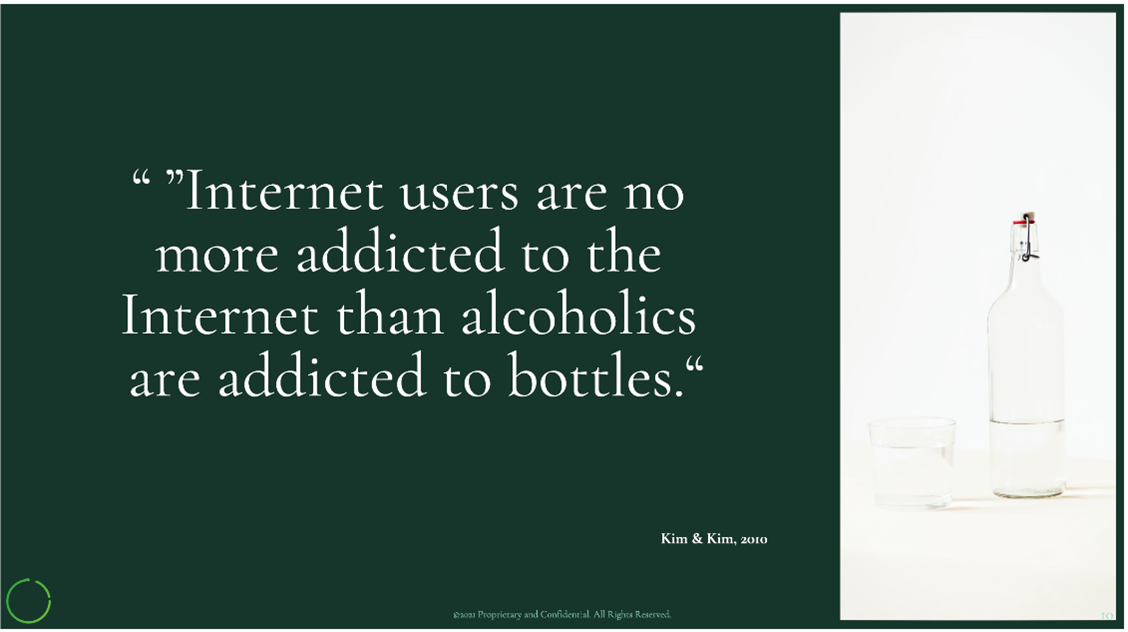How Can Developers Integrate Digital Wellness into Games?
Digital wellness has become a hot topic for consumers as well as individuals engaged in Artificial Intelligence (AI) and Human-Computer Interaction Ethics. Gaming served as a boon (or at least a band-aid) in the COVID-19 era with a remedy to shelter-in-place restriction. In the midst of increased interest in gaming, we also of a movement for creating balance between the virtual world and tangible, in-person experiences. The goal is to take the benefits of technology use and also the benefits of interacting in the physical world and find a positive balance between them. Concerns about technology use have abounded in recent years. Consider the introduction of Gaming Disorder in the World Health Organization’s most recent diagnostic categorization. The diagnosis signature features are (put simply): impaired control, increased prioritization of gaming over other tasks, and continuation of gaming despite negative consequences. One of the major challenges is individuals with a history of social anxiety, depression, autism spectrum disorder, and substance use are all at higher risk for problematic gaming.
Internet Addiction or Gaming Disorder?
People often challenge the idea of addiction in internet gaming. Research has demonstrated that there are similar underlying neuro-biological features of addiction in gaming to substance use disorders. But it is more than just spending time on the Internet that leads to addiction. Communications researchers Min Gyu Kim and Joohan Kim (2010) described it this way, “Internet users are no more addicted to the Internet than alcoholics are addicted to bottles.” It is not use of a device, rather what the person is interacting with that can lead to addictive behavior. In fact, we find the same reinforcement paradigms that are used to shape behaviors in our classic psychology research used for gambling and gaming alike.
Reinforcement
Reinforcement is the reward we get for doing some sort of behavior. In gaming, the reinforcement comes in many forms: expected, unexpected, a minor reward, a major find. Imagine a team of engineers wants to build a game. They might ask what rewards and surprises they can build into the game to make their players come back for more. Finding that treasure as you’re wandering around to forage in an open world game is a huge event when that treasure is legendary. Also consider you have just one more dungeon to raid before you have the XP to reach the next level. That is another type of reinforcement. More concerning in recent years have been the loot boxes, where players can pay to essentially spin the wheel for an object of random value. Some say this toes the line too firmly with gambling, but we’ll explore loot boxes more thoroughly in a future article.
Consumer Safeguards
We have identified some of the problems with gaming, now what can we do? In 2018 an international team of researchers, led by Orsolya Király at the Institute of Psychology ELTE Eötvös Loránd University in Hungary, reviewed current practices across the globe for building safeguards for players. The team identified three areas where work is already being done:
1) Limiting availability of gaming
2) Reducing the Risk of gaming
3) Having available services for gamers
Some countries, including South Korea, China, Thailand, and Vietnam have already implemented a “shut down” system for minors, which prevents non-stop play. Also, game companies are reducing the risk by building in warning messages that cite healthy gaming habits. Services to gamers are still an area of improvement in the United States but they are established in some other countries. For example, South Korea has ministries and state institutions aimed at addressing problematic gaming.
Király and colleagues have suggested that game developers can go further in their quest to make games safer. Specifically, changing the mechanisms of games to make them less instantaneously rewarding to the addiction centers in our brain is a start. By acknowledging the addictive potential of games, researchers and gaming companies can come together to maintain the prosocial and resilience possibilities of games while making them less addictive in form.
In addition, several agencies have started to focus on digital ethics and digital wellness in the United States. These organizations are listed below with a brief description.
What Can Game Developers Do?
Here are a few suggestions for game developers who are looking to integrate technology ethics and digital well-being into their product to consider:
Make games that rely on meaning making for motivation, rather than point systems
Build community-based elements to your game to foster connections
Consider building augmented reality tasks into your game to balance the digital and physical world
Relate games to real-world applications
Allow users to set and maintain time limits
Limit availability for vulnerable populations (e.g., minors)
Make warnings about problematic use more prevalent
Educate consumers about problematic use
Build easy access to supports and resources in the main menu
Foster development of AI Ethics departments in your organization
Need More Information?
Consider taking a look at these organizations:
The Children’s Screentime Action Network
The Entertainment Software Rating Board


